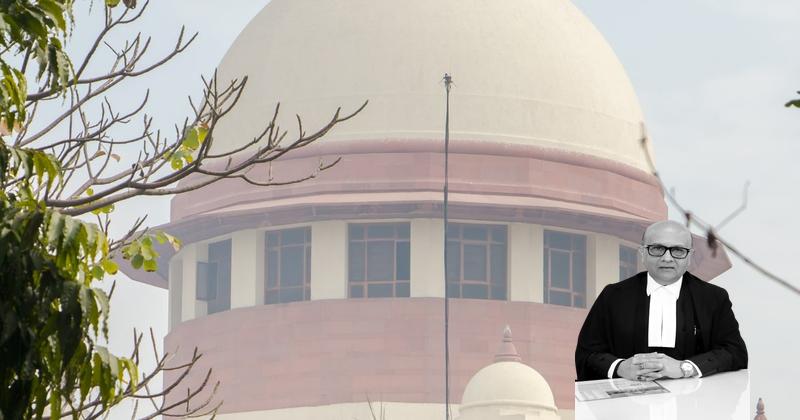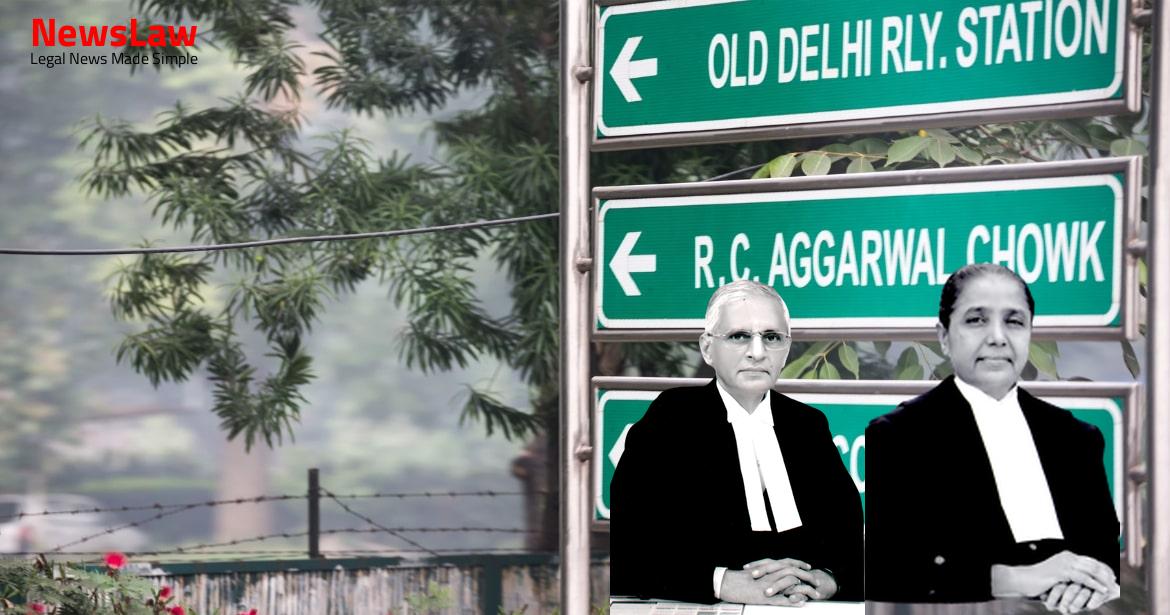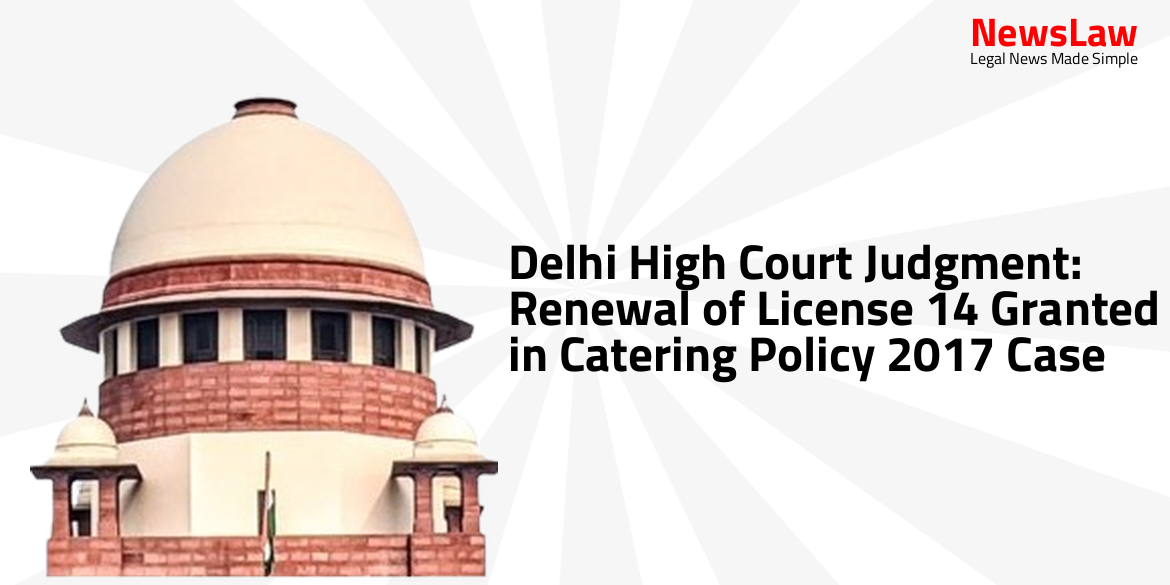712 OF 2020 Raj Kumar Verma…Appellant(s) Versus Union of India…Respondent(s) By way of this writ petition under Article 32 of the Constitution of India, filed by the writ petitioner – Moser Baer Karamchari Union have prayed for an appropriate writ, direction or order striking down Section 327(7) of the Companies Act, 2013 (hereinafter referred to as “Act, 2013”) as arbitrary and violative of Article 21 of the Constitution of India. 777 and 712 of 2020 1.1 By way of these writ petitions under Article 32 of the Constitution of India, the respective writ petitioners have prayed that Clause 19(a) of the Eleventh Schedule of the IBC pursuant Section 255 of the IBC, be declared as unreasonable and violative of Article 14 of the Constitution of India as Clause 19(a) of the Eleventh Schedule of the IBC inserts sub-section (7) in Section 327 of the Companies Act, 2013, which puts statutory bar on the application of Sections 326 and 327 of the Companies Act, 2013, to the liquidation proceedings under the IBC. Shri Gopal Sankaranarayanan, learned Senior Advocate, has appeared on behalf of the petitioner(s). Resultantly, through Companies (Amendment) Act, 1985, the idea of “workmen’s portion” and the “overriding preferential payments” were introduced and crystallised in the Companies Act, 1956. Thirdly, the workmen’s dues and debts of secured creditor as described in Section 529(1) Proviso (c) get overriding preferential payment and rank pari passu. In the year 2000, the Report of the High-Level Committee on Law relating to Insolvency and Winding Up of Companies was submitted under the chairmanship of Justice V. 6 It is submitted that the focus of these two Committees was on bringing the claims of “employees of a company” pari passu with the secured creditors, when the existing provision as on that day only specified that “workmen’s dues” would rank pari passu with secured creditors. It is submitted that resultantly, the Companies Act, 2013, as enacted, while mostly retaining the structure of Section 529 and 529-A of the Companies Act, 1956, introduced the proviso to Section 326(1) and also modified Section 326(2). It is submitted that therefore, the position of law regarding “overriding preferential payments” and “preferential payments”, as per the Companies Act, 1956 and the Companies Act, 2013, is that workmen have a charge over the property of the security of every secured creditor to the extent of workmen’s portion, the workmen’s dues rank pari passu with the debts owed to secured creditors and specifically wages or salary due to workmen for a period of 2 years preceding the winding up order shall be paid in priority to all other debts. It is submitted that the Bankruptcy Law Reforms Committee submitted its Report on 04.11.2015.
As the next tier, workmen dues for 9 month period beginning 12 months before liquidation commencement date and ending 3 months before liquidation commencement date were to rank along with dues to unsecured financial creditors. It is submitted that Section 36, as introduced in the Bill, provided for formation of the liquidation estate. It is submitted that in terms of the waterfall mechanism, this was therefore a step further than the path suggested by the BLRC Report since the workmen’s dues were to rank pari passu for a defined period of 12 months.
Secondly, after consideration of the representations that workmen dues are to be paid as per the scheme contained in the Companies Act, 2013, the Joint Committee recommended that since the dues owed to Governments are being paid in respect of two years preceding liquidation commencement date, the workmen’s dues must also be paid for a period of two years, instead of the existing period of 12 months, preceding liquidation commencement date. 12 It is submitted that Section 53 Explanation (ii) of IBC states that the term “workmen’s dues” shall have the same meaning as assigned to it in Section 326 of the Companies Act, 2013. Thereafter, Clause 20 of the Schedule inserts Section 327(7) to the Companies Act, 2013 which states that Section 326 and Section 327 shall not be applicable in the event of liquidation under the IBC. It is submitted that therefore, the argument that the waterfall mechanism from the Companies Act, 2013 must apply even under the IBC, would be wholly untenable and unworkable. In liquidation, from the time of the BLRC Report, the focus has been on defined payout prioritisation and organically, the workmen’s dues have increased from 3 months to 12 months and now to 24 months to rank pari passu with secured creditors who relinquish their security. It is submitted that in economic matters, a wider latitude is given to the law-maker and the Court allows for experimentation in such legislations based on practical experiences and other problems seen by the law-makers. It is submitted that after noting the objects and reasons for enactment of the IBC, this Hon’ble Court held that there existed an intelligible differentia for classification of financial creditors and operational creditors under the IBC.
It is submitted that this Court in the said decision held that the principle of “equality for all” cannot be stretched to treat financial and operational creditors on par as this would defeat the entire objective of the IBC. Edelweiss Asset Reconstruction Company Limited, (2021) 9 SCC 657, this Court was concerned with whether the approved resolution plan was binding on the Government, whether before or after the Amendment made to Section 31 of IBC by Amendment Act, 2019. 1 Shri Balbir Singh, learned ASG has taken us to the relevant provisions under the Companies Act, 1956, more particularly, Sections 59A, 529A, 530 and the relevant provisions of the Companies Act, 2013. He has submitted that following are the relevant features in case of winding up proceedings under Sections 326 and 327 of the Act, 2013:- workmen’s portion in the security shall be paid in priority to all other debts; however, workmen’s dues (given in (b)(i) and (ii) payable for the period of 24 months, shall be paid in priority to all other debts (including debts due to secured creditors). It is submitted that as per the said provision, all payments due to any workmen or employee from Provident Fund, Pension Fund and The Gratuity Fund shall not be included in the list of assets under liquidation estate.
7 It is submitted that the challenge has been made on the ground of Article 14 of the Constitution of India by comparing Section 53 of the IBC with the provisions of erstwhile Companies Act, 1956 and existing Companies Act, 2013 to state that workmen are at a disadvantageous position on the basis: (i) workmen’s portion in the security held by secured creditor has been done away with; (ii) preference/superiority given to 24 months over any other debt has been done away with; (iii) workmen and secured creditors have been placed in same pool. 9
It is submitted that the UNICITRAL Legislative Guide on Insolvency Law was instructive for the Indian experience on drafting the IBC which provided critical guidance on what an insolvency law represents. Jindal Steel and Power Limited and Anr., (2021) 7 SCC 474 and Sesh Nath Singh and Anr.
Baidyabati Sheoraphuli Co- operative Bank Limited and Anr., (2021) 7 SCC 313. It is further submitted that it was also debated with respect to the waterfall mechanism under the IBC and was agreed that the workmen dues capped up to 3 months will be given the second priority with the secured creditor after the costs of the corporate insolvency and resolution process and liquidation. 12 It is submitted that subsequently, a report of the Joint Committee on the Insolvency and Bankruptcy Code, 2015 was prepared and presented in Lok Sabha on 28.04.2016 wherein the issue of exclusion of Provident Fund, Pension Fund and Gratuity Fund from the liquidation estate assets and estate of bankrupt was debated. It is submitted that the liquidation cost is defined in Section 5(16) of the IBC which includes the cost incurred by the liquidator during the period of liquidation subject to such regulations as specified by the Board. 15
It is submitted that the issue with respect to the workmen and secured creditor being kept at equal footing under Section 53 of the IBC is only in the case wherein the secured creditor has relinquished its security and the same is the part of the liquidation pool. 16
Also Read: https://newslaw.in/case-type/criminal/analysis-of-bail-granting-criteria-in-criminal-cases/
It is further submitted that the Committee in the Report of February, 2020 duly agreed that the priority for recovery to secured creditors under Section 53(1)(b)(ii) should be applicable only to the extent of the value of the security interest that is relinquished by the secured creditor. Regulation 21(A) of Liquidation Process requires that secured creditors who realise their security interest contribute towards the payment of dues of workmen as they would have if they had relinquished their security interest to the liquidation estate.
It is submitted that in fact, the secured creditors are taking significant hair-cut and workmen are being compensated on equitable basis in a just and proper manner as per Section 53 of the IBC. 20 It is further submitted by Shri Balbir Singh, learned ASG appearing on behalf of the respondent – Union of India that the IBC being a law relating to economic activities as observed and held by this Court in the case of R.K. As per Section 327(7), Sections 326 and 327 of the Act, 2013 shall not be applicable in the event of liquidation under the IBC. Distribution of assets.—(1)
Notwithstanding anything to the contrary contained in any law enacted by the Parliament or any State Legislature for the time being in force, the proceeds from the sale of the liquidation assets shall be distributed in the following order of priority and within such period and in such manner as may be specified, namely— ( a ) the insolvency resolution process costs and the liquidation costs paid in full; ( b ) the following debts which shall rank equally between and among the following— ( i ) workmen’s dues for the period of twenty-four months preceding the liquidation commencement date; and ( ii ) debts owed to a secured creditor in the event such secured creditor has relinquished security in the manner set out in Section 52; ( c ) wages and any unpaid dues owed to employees other than workmen for the period of twelve months preceding the liquidation commencement date; ( d ) financial debts owed to unsecured creditors; ( e ) the following dues shall rank equally between and among the following:— ( i ) any amount due to the Central Government and the State Government including the amount to be received on account of the Consolidated Fund of India and the Consolidated Fund of a State, if any (3) The fees payable to the liquidator shall be deducted proportionately from the proceeds payable to each class of recipients under sub-section (1), and the proceeds to the relevant recipient shall be distributed after such deduction. Meaning thereby, in case of liquidation of a company under IBC, the provisions of Section 53 of the IBC and other provisions of the IBC shall be applicable as the company is ordered to be liquidated or wound up under the provisions of IBC. As per Section 53(1)(b) the workmen’s dues for the period of twenty-four months preceding the liquidation commencement date shall rank equally between the workmen and the secured creditor in the event such secured creditor has relinquished security in the manner set out in Section 52. Therefore, a conscious decision has been taken by the Parliament/Legislature in its wisdom to keep out of all sums due to any workman/employee from the provident fund, the pension fund and the gratuity fund from the liquidation estate assets [as per Section 36(4)] and that the workmen’s dues for the period of twenty-four months preceding the liquidation commencement date shall rank equally between the workmen’s dues to the said extent and the dues to the secured creditor. The other grounds were, when the company, by special resolution, has decided to be wound up; when the company has acted against the interests of sovereignty and integrity of India, the security of the State, friendly relations with foreign State, public order, decency or morality; if the Tribunal has ordered winding up of the company under Chapter XIX of the Companies Act, 2013, a chapter relating to revival and rehabilitation of sick companies; if on an application made by the Registrar or any other person authorised by the Central Government by notification, the Tribunal is of the opinion that the affairs of the company have been conducted in a fraudulent manner or the company has been formed for fraudulent and unlawful purpose, or persons concerned in formation or management of its affairs have been guilty of fraud, misfeasance, misconduct in connection therewith, which makes it proper that the company be wound up; or if the company has made default in filing its financial statements or annual returns with the Registrar for immediately preceding five consecutive financial years; lastly, if the Tribunal is of the opinion that it is just and equitable to wind up the company.
The other grounds are when the company has acted against the sovereignty and integrity of India, security of the State, friendly relations with foreign States, public order, decency or morality; if the Tribunal on an application made by the Registrar or any other person authorised by the Central Government by a notification is satisfied that the affairs of the company have been conducted in a fraudulent manner, or the company was formed for a fraudulent or unlawful purpose, or the persons concerned in the formation or management of its affairs have been found to be guilty of fraud, misfeasance or misconduct in connection therewith, which makes it proper for the company to be wound up; if the company has defaulted in filing financial statements and annual returns with the Registrar for immediately preceding five consecutive financial years; and lastly if the Tribunal is of the opinion that it is just and equitable that the company should be wound up. 2 Clearly, the legislature has now removed clause (a) to Section 271 of the Companies Act, 2013, when a company is unable to pay the debts, and clause (d) to Section 271 of the Companies Act, 2013, when a company is directed to be wound up under the Chapter XIX of the Companies Act, 2013. The Code has been enacted with the objective of reorganisation and insolvency resolution of corporate persons, partnership firms and individuals in a time-bound manner for maximisation of the value of assets, promote entrepreneurship, enhance availability of credit and balance the interests of all stakeholders, including by alteration in the priority of payment of government dues, to establish an Insolvency and Bankruptcy Fund, and matters connected therewith or incidental thereto. The waterfall mechanism and the hierarchy prescribed to the workmen’s dues should be seen in the overall objective of the Code, which is to explore whether the corporate debtor can be revived so that jobs are not lost, the use of economic assets is maximised, and there is an effective legal framework which enhances the viability of credit in the hands of banks and financial institutions. Union of India, (1981) 4 SCC 675, has held : “ 8. Doud where Frankfurter, J., said in his inimitable style: ‘In the utilities, tax and economic regulation cases, there are good reasons for judicial self-restraint if not judicial deference to legislative judgment. When these are added to the complexity of economic regulation, the uncertainty, the liability to error, the bewildering conflict of the experts, and the number of times the Judges have been overruled by events — self- limitation can be seen to be the path to judicial wisdom and institutional prestige and stability.’ The Court must always remember that “legislation is directed to practical problems, that the economic mechanism is highly sensitive and complex, that many problems are singular and contingent, that laws are not abstract propositions and do not relate to abstract units and are not to be measured by abstract symmetry” ; ‘that exact wisdom and nice adaption of remedy are not always possible’ and that ‘judgment is largely a prophecy based on meagre and uninterpreted experience’. There may even be possibilities of abuse, but that too cannot of itself be a ground for invalidating the legislation, because it is not possible for any legislature to anticipate as if by some divine prescience, distortions and abuses of its legislation which may be made by those subject to its provisions and to provide against such distortions and abuses.
It would be outside the province of the Court to consider if any particular immunity or exemption is necessary or not for the purpose of inducing disclosure of black money. The Court cannot possibly assess or evaluate what would be the impact of a particular immunity or exemption and whether it would serve the purpose in view or not. The Court must while examining the constitutional validity of a legislation of this kind, “be resilient, not rigid, forward looking, not static, liberal, not verbal” and the Court must always bear in mind the constitutional proposition enunciated by the Supreme Court of the United States in Munn v. Moreover, as already pointed out above, the trial and error method is inherent in every legislative effort to deal with an obstinate social or economic issue and if it is found that any immunity or exemption granted under the Act is being utilised for tax evasion or avoidance not intended by the legislature, the Act can always be amended and the abuse terminated. However, in the path of economic progress, if the informal system was sought to be replaced by a more organised system, capable of better regulation and discipline, then this was an economic philosophy reflected by the legislation in question. When considering an application for staying the operation of a piece of legislation, and that too pertaining to economic reform or change, then the courts must bear in mind that unless the provision is manifestly unjust or glaringly unconstitutional, the courts must show judicial restraint in staying the applicability of the same. It is now well settled that there is always a presumption in favour of the constitutional validity of any legislation, unless the same is set aside after final hearing and, therefore, the tendency to grant stay of legislation relating to economic reform, at the interim stage, cannot be understood. that the legislature should be allowed some play in the joints because it has to deal with complex problems which do not admit of solution through any doctrine or straitjacket formula and this is particularly true in case of legislation dealing with economic matters, where having regard to the nature of the problems greater latitude require to be allowed to the legislature.” ****
The raison d’tre for the Insolvency and Bankruptcy Code **** 27. Therefore, maximisation of value of the assets of such persons so that they are efficiently run as going concerns is another very important objective of the Code. Since more investment can be made with funds that have come back into the economy, business then eases up, which leads, overall, to higher economic growth and development of the Indian economy. The experiment contained in the Code, judged by the generality of its provisions and not by so-called crudities and inequities that have been pointed out by the petitioners, passes constitutional muster. In principle, it cannot be doubted that the cases of revival or winding up of the company on the ground of insolvency and inability to pay debts are different from cases where companies are wound up under Section 271 of the Companies Act 2013. We would also reject the argument that to find out whether there was a violation of Article 14 of the Constitution of India or whether the right to life under Article 21 Constitution of India was infringed, we must word by word examine the waterfall mechanism envisaged under the Companies Act, 2013, where the company is wound up in terms of grounds (a) to (e) of Section 271 of the Companies Act, 2013; and the rights of the workmen when the insolvent company is sought to be revived, rehabilitated or wound up under the Code. As per Section 324 of the Companies Act, 2013, all debts payable on a contingency, or all claims against the company, present or future, certain or contingent, ascertained or sounding only in damages, are admissible to proof against the company. The workmen’s portion in relation to the security of any secured creditor of a company means the amount which bears to the value of security, the same proportion as the amount of workmen’s dues bears to the aggregate of the amount of workmen’s dues and the amount of debts due to the secured creditors. Accordingly, the aggregate amount due towards workmen’s dues and the amount of debts due to the secured creditors is Rs. Sub- clause (ii) to clause (b) of the Explanation to Section 326 of the Companies Act, 2013 deals with all accrued holiday remuneration payable to any workmen or, in the case of his death, to any other person in his right on termination of his employment, etc. We are not informed that a different period has been prescribed and, therefore, the sums referred to in sub-clauses (i) and (ii) to clause (b) of the Explanation to Section 326 of the Companies Act, 2013 are payable for two years preceding the winding up order. Sub-section (2) to Section 52 of the Code states that where the secured creditor realises the security interest, he shall inform the liquidator of such security interest and identify the asset subject to such security interest to be realised. Sub-section (4) to Section 52 of the Code states that the secured creditor may enforce, realise, settle, compromise or deal with the secured asset in accordance with such law as applicable to the security interest being realised and to the secured creditor. Sub-section (9) to Section 52 of the Code states that where proceeds for realisation of the secured assets are not adequate to repay the debts owed to the secured creditor, the unpaid debts of such secured creditor shall be paid by the liquidator in the manner specified in clause (e) to sub-section (1) to Section 53 of the Code. To protect the interest of the workmen where the secured creditor does not relinquish its security interest to fall under Section 53 of the Code, Regulation 21A of the Insolvency and Bankruptcy Board of India (Liquidation Process) Regulations, 2016 has been enacted, and it requires that the secured creditor, who opts to realise its security interest as per section 52 of the Code, has to pay as much towards the amount payable under the clause (a) and sub-clause (i) to clause (b) of sub-section (1) to Section 53 of the Code to the liquidator within the time and the manner stipulated therein.
Case Title: MOSER BAER KARAMCHARI UNION THR. PRESIDENT MAHESH CHAND SHARMA Vs. UNION OF INDIA (2023 INSC 479)
Case Number: W.P.(C) No.-000421 / 2019



